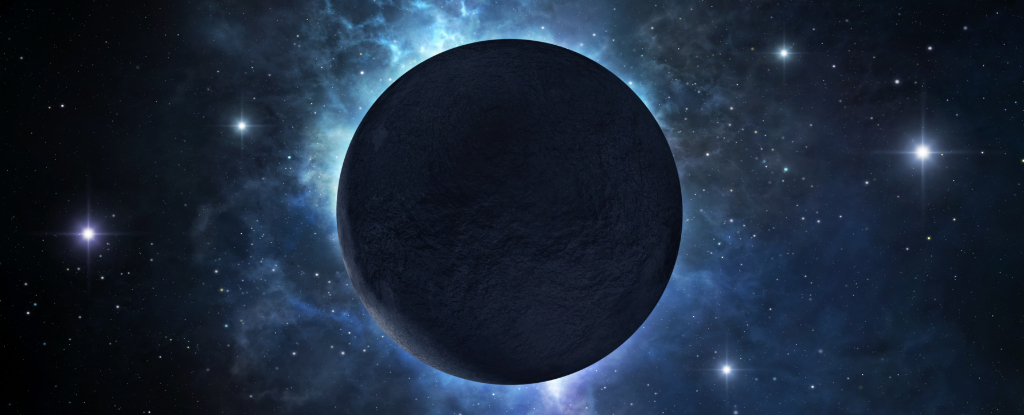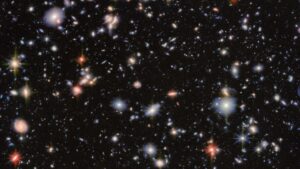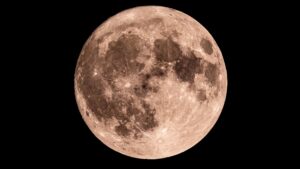
Astronomers are intensifying their search for a potentially undiscovered planet, known as Planet Nine, which may be lurking in the outer reaches of the Solar System. This idea has persisted since the 1930s, when researchers first proposed the existence of a large planet to explain the unusual orbit of Uranus. Although subsequent studies attributed this anomaly to a recalibration of Neptune‘s mass in the 1990s, the concept of a hidden planet has resurfaced, particularly following a 2016 theory by Konstantin Batygin and Mike Brown from Caltech.
Their hypothesis suggests that a large, unseen planet could be influencing the orbits of several objects in the Kuiper Belt, an area populated by dwarf planets, asteroids, and various other celestial bodies beyond Neptune, including Pluto. Many of these trans-Neptunian objects exhibit orbits that deviate from expected patterns, leading to speculation that a massive gravitational force is at play.
Batygin and Brown’s argument draws parallels to the Moon’s orbit around Earth. While the Moon completes a revolution around the Sun every 365.25 days, it also orbits Earth every 27 days, resulting in a spiraling motion when observed from a distance. Similarly, the Kuiper Belt objects may be experiencing gravitational influences beyond just the Sun’s pull.
As Batygin noted in 2024, “I think it is very unlikely that Planet Nine does not exist. There are currently no other explanations for the effects that we see, nor for the myriad other P9-induced effects we see on the Solar System.”
In 2018, the discovery of a new candidate for a dwarf planet, designated 2017 OF201, further fueled this debate. Measuring approximately 700 kilometers across, this object has a highly elliptical orbit that raised questions about whether it was influenced by Planet Nine or if it encountered an impact early in its formation.
Despite growing evidence, challenges remain regarding the existence of Planet Nine. Critics argue there may not be sufficient data to support the claims about its influence. Alternative theories, including the presence of a debris ring or even a small black hole, have emerged to explain the erratic motions observed in the Kuiper Belt. The primary obstacle, however, lies in the limited observational data available from the outer Solar System.
For instance, the orbital period of 2017 OF201 is approximately 24,000 years. While astronomers can track an object’s path around the Sun relatively quickly, detecting gravitational influences requires observing multiple orbits, which can take centuries.
Recent discoveries, such as 2023 KQ14, have added complexity to the search for Planet Nine. Discovered using the Subaru Telescope in Hawaii, this object, classified as a “sednoid,” spends most of its time far from the Sun, within a region approximately 5,000 astronomical units (AU) from the Sun. Its elliptical orbit is more stable than that of 2017 OF201, suggesting that a large planet, including the hypothesized Planet Nine, is not significantly affecting its trajectory.
Should Planet Nine exist, it may be positioned more than 500 AU away from the Sun. The discovery of this fourth sednoid reinforces the notion that if a massive planet does influence the Kuiper Belt, it is likely located at a considerable distance.
Despite these challenges, the search for Planet Nine continues. The vastness of the outer Solar System presents significant barriers to discovery, as even unmanned spacecraft would take an estimated 118 years to reach the necessary distances for observation, based on the speed of NASA’s New Horizons mission.
As astronomers enhance their observational capabilities, new asteroids and distant objects are continually being identified. This ongoing research may eventually illuminate the mysteries of the outer Solar System, providing insight into the potential existence of Planet Nine. The scientific community remains vigilant, eagerly anticipating what future investigations may reveal about our cosmic neighborhood.
This article is based on insights from Ian Whittaker, a Senior Lecturer in Physics at Nottingham Trent University, and is adapted from a piece originally published in The Conversation.







